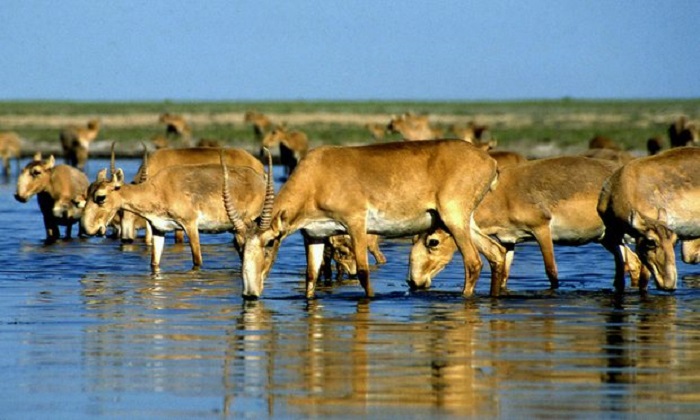A recent aerial survey of saigas carried out from April 18 to May 3, 2016 has revealed that the numbers of all three saiga populations in Kazakhstan—Ural, Betpak-Dala and Ustyurt — are going up. The surveys were conducted by the Ministry of Agriculture of the Republic of Kazakhstan in partnership with the Association for the Conservation of Biodiversity of Kazakhstan (ACBK) and JSC “Kazaviaspas”, Kazakhstan government announced on Tuesday.
“The news about recovering saiga populations in Kazakhstan is a sign of hope after the catastrophic mass saiga die-off event in 2015,” Bradnee Chambers, Executive Secretary of the Convention on Migratory Species (CMS), said in a statement.
The surveys counted a total of 108,300 adult saigas. The Ural population has about 70,200 individuals, up from 51,700 in 2015, while the Ustyurt population has around 1,900 individuals, up from 1,200 in 2015. The Betpak-Dala population also showed promise with about 36,200 individuals, the results revealed.
“This is far below the 242,000 animals we counted in spring 2015, before the mass-die off,” Albert Salemgareyev from ACBK, co-leader of the Altyn Dala Conservation Initiative, said. “But we are grateful for this glimpse of hope.”
Scientists are continuing to investigate the conditions that could have led to the 2015 mass deaths.
Meanwhile, poaching is an immediate threat to saigas, conservationists say. Male saigas are especially targeted by poachers for their horns that are used by the Chinese in their traditional medicine.
“Poaching remains a serious threat to the species and we need to be aware of the fact that mass die-offs such as the one which shocked the world in 2015 can occur again and that we have still not fully understood the underlying causes of the mass die-off,” Chambers said.
More about:
















































